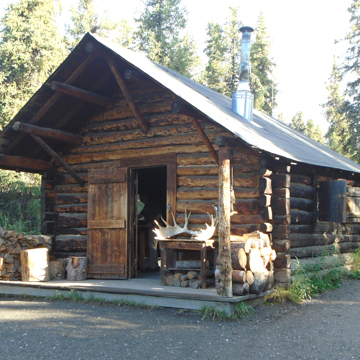Fourteen cabins constructed within Denali National Park from 1924 to 1935 survive. Built as winter quarters for rangers who patrol the park to prevent poaching and illegal trapping, the cabins are simple log structures. Patrolling in the winter is still done by dog sled. The cabins are spaced 10 to 15 miles apart, equivalent to one day's journey.
Six of the cabins were built along the McKinley National Park Road, the 86-mile road that goes through the heart of the park, from the Alaska Railroad station to Kantishna (see IN029.1 and IN029.2). The Alaska Road Commission and the National Park Service cooperated to construct the road, and the cabins along it are also a product of their partnership.
Along the park's north boundary, six boundary cabins constructed by carpenters contracted to the park service in 1930–1932 survive. The 12-foot-by-14-foot cabins are constructed of round logs saddle notched at the corners; log ends are battered. Two later boundary cabins were built in 1932 and 1935 ( IN029.3).

